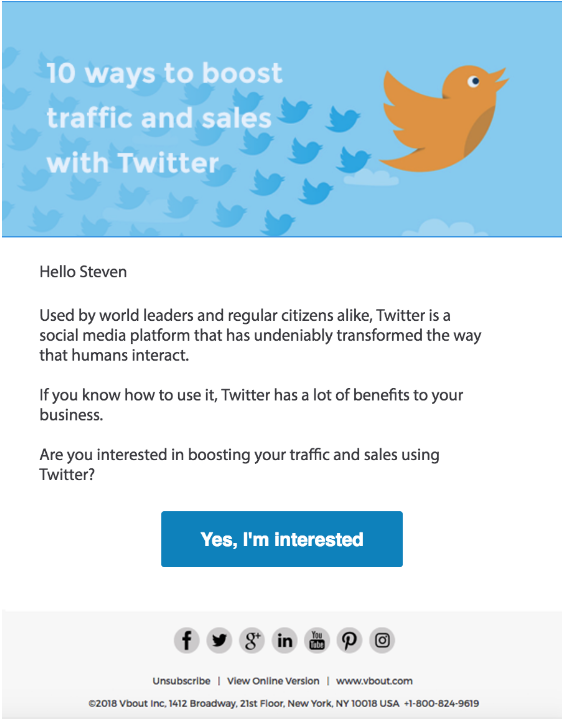When you send any email for any reason, it’s important to remember that all of the elements of that email — the copy and design — should work together toward accomplishing a single goal: getting people to click your CTA. And each email should only have one dedicated CTA.
Let’s talk about the copy of your emails first:
- Subject Line — The first thing that people read when they receive your email is the subject line. And if it doesn’t catch their interest immediately, they don’t go any further. They don’t read your pre-header, they don’t open, and they definitely don’t click. Which illustrates why spending a little extra time crafting an eye-catching subject line is well worth it. To help, subscribe to lots of different email lists and then create a folder of subject lines that caught your attention. When you need ideas, reference this folder. Also, consistently A/B test your subject lines (it’s one of the easiest things to test in an email) to see what resonates with your audience and what doesn’t. Here are a few examples of subject lines with high open rates, according to HubSpot:
-
- “Uh-oh, your prescription is expiring”
- “Best of Groupon: The Deals That Make Us Proud (Unlike Our Nephew, Steve)”
- “👗 Free (Cool!) Clothes Alert 👖”
- “The timer’s going off on your cart!”
- “What Did You Think? Write a Review.”
- “Black Friday shoppers are the worst customers”
- “*Don’t Open This Email*”
- “I got Botox—& THIS is what it looked like”
- Pre-Header — Right after reading the subject line, most people will read the pre-header to get more information. This is the snippet text that’s usually right under the subject line. Just like the subject line, you should spend a little extra time thinking about your pre-header and what might encourage your audience to open (without being deceptive, of course). How can you grab their attention or expand upon the topic of the subject line? Here are some high-performing pre-headers, according to Email on Acid.

- Email Copy — The copy of your email is arguably the most important element. This is where subscribers engage with the story you’re telling them, where they experience emotions you’re trying to evoke, and it’s where they decide whether they’re going to click on your CTA or not. Great email copy is simple, tells a story, evokes emotion, connects with your audience, and is pertinent to their desires. Here are a few solid examples of email copy which does all of that:
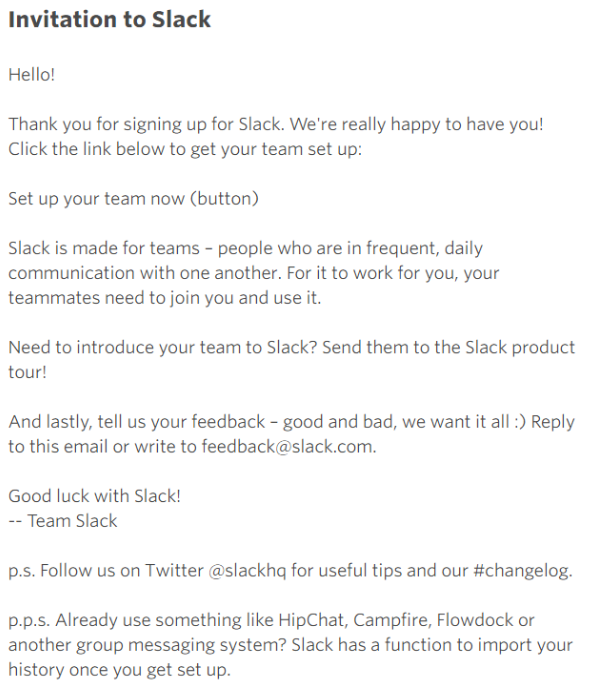
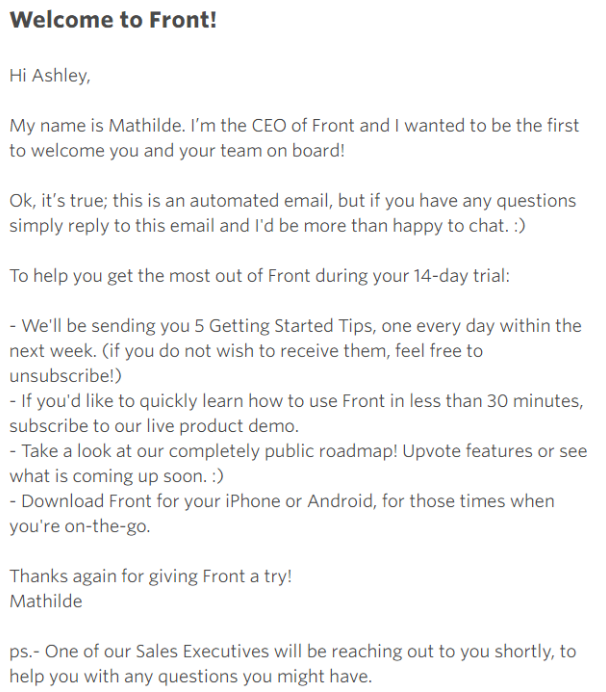
- CTA — This is where the rubber meets the road. Someone might open your email, they might look at your header, and they might even read your email copy. But the immediate goal of your email (beyond branding and maintaining a warm relationship) is to get your target market clicking on the CTA of your email. For that reason, your CTA needs to be relevant to the rest of your email and enticing to your audience. Here are a few examples of good email CTAs.
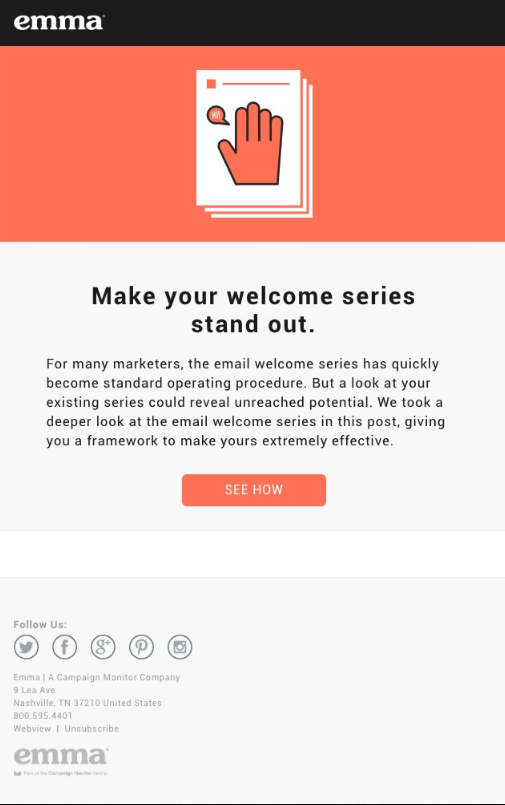
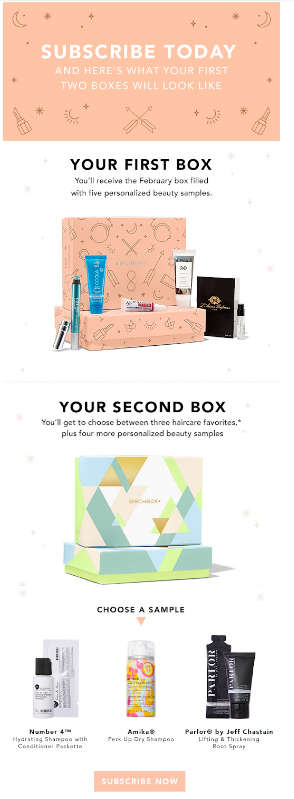
- Dynamic Content — Dynamic content is content that refers specifically to the subscriber which it was sent to (sometimes, this is simply called personalization). This could be as simple as including each subscriber’s name within an email campaign or it could be as complicated as providing behavior-driven product recommendations. Many great email marketing campaigns consistently include dynamic content as a part of their strategy. Here are a few examples.
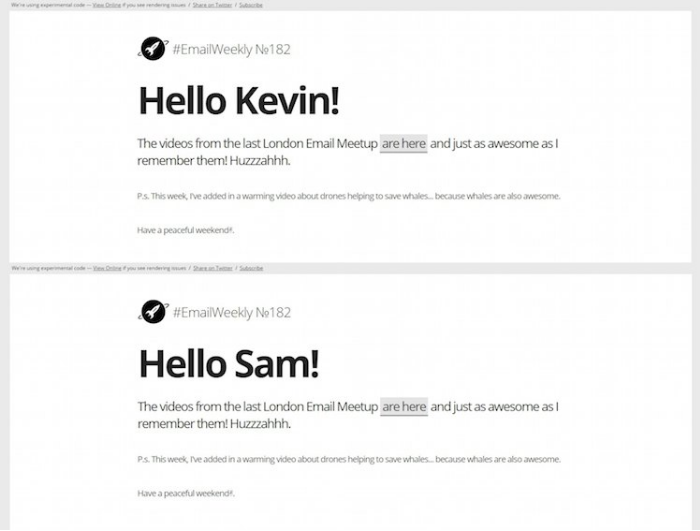
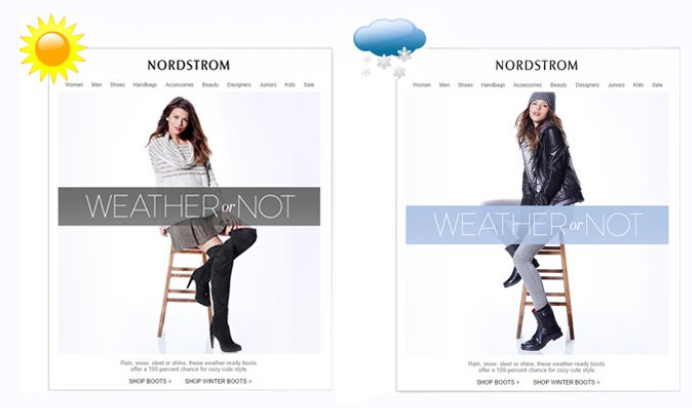
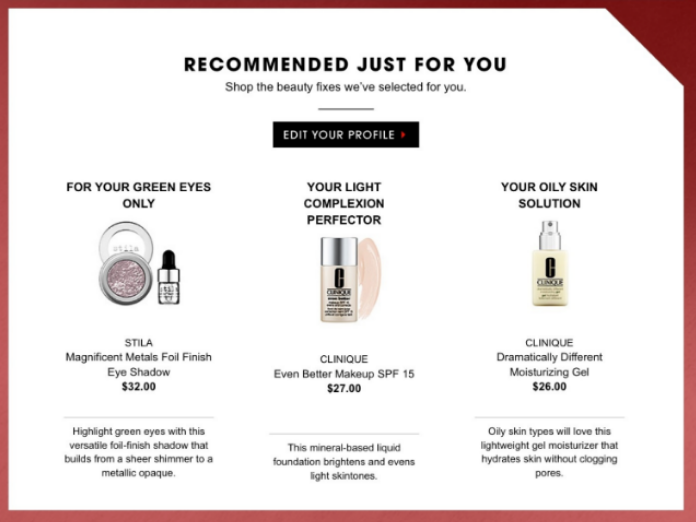
- Value Statement — The value statement of an email is quite simply the value that an email delivers to its subscribers. Ultimately, every email you send should provide compelling and enticing value to the recipient. If you’re sending content, it should be content relevant to the subscriber’s situation, which helps them take a step toward their goals. If you’re sending a special offer, it should be a special offer for a product which the subscriber has already expressed interest in. And if you’re sending a high-ticket sales email… well, the service your selling should authentically be of benefit to the subscriber (that will make selling a whole lot easier, anyway). Value is key. Here’s an example of an email that provides real value to its recipients.
